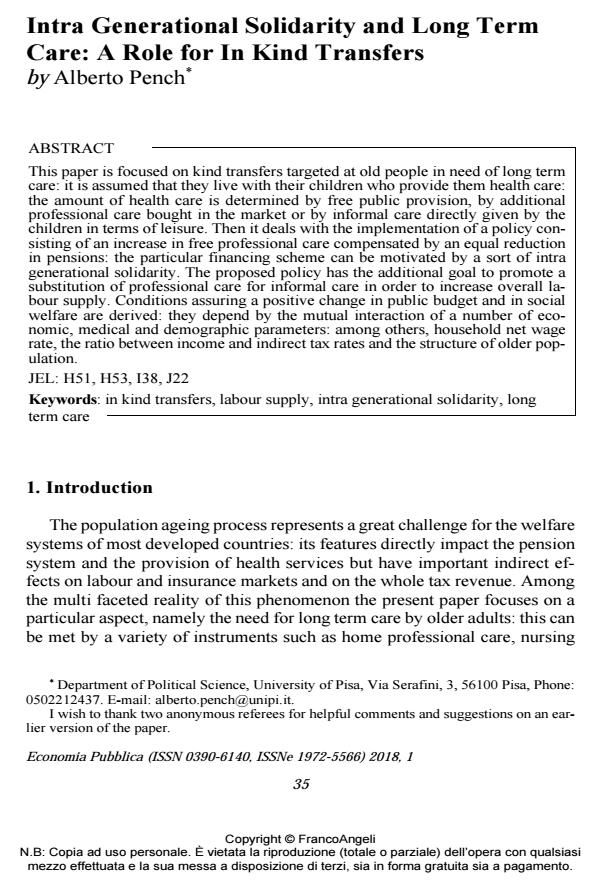Intra Generational Solidarity and Long Term Care: A Role for In Kind Transfers
Journal title ECONOMIA PUBBLICA
Author/s Alberto Pench
Publishing Year 2018 Issue 2018/1
Language English Pages 23 P. 35-57 File size 245 KB
DOI 10.3280/EP2018-001002
DOI is like a bar code for intellectual property: to have more infomation
click here
Below, you can see the article first page
If you want to buy this article in PDF format, you can do it, following the instructions to buy download credits

FrancoAngeli is member of Publishers International Linking Association, Inc (PILA), a not-for-profit association which run the CrossRef service enabling links to and from online scholarly content.
This paper is focused on kind transfers targeted at old people in need of long term care: it is assumed that they live with their children who provide them health care: the amount of health care is determined by free public provision, by additional professional care bought in the market or by informal care directly given by the children in terms of leisure. Then it deals with the implementation of a policy consisting of an increase in free professional care compensated by an equal reduction in pensions: the particular financing scheme can be motivated by a sort of intra generational solidarity. The proposed policy has the additional goal to promote a substitution of professional care for informal care in order to increase overall labour supply. Conditions assuring a positive change in public budget and in social welfare are derived: they depend by the mutual interaction of a number of economic, medical and demographic parameters: among others, household net wage rate, the ratio between income and indirect tax rates and the structure of older population.
Keywords: In kind transfers, labour supply, intra generational solidarity, long term care
Jel codes: H51, H53, I38, J22
Alberto Pench, Intra Generational Solidarity and Long Term Care: A Role for In Kind Transfers in "ECONOMIA PUBBLICA " 1/2018, pp 35-57, DOI: 10.3280/EP2018-001002